Light Bulb Statistics
Lights in U.S. homes are undergoing a transition as lighting technologies evolve and meet federal standards.
According to the 2015 Residential Energy Consumption Survey (RECS), most homes utilized a combination of incandescent and compact fluorescent lamps (CFLs). According to data collected nationwide, 18% of households no longer use traditional incandescent bulbs. While 86% of the respondents used at least one LED or CFL bulb.
As light-emitting diodes (LED) bulbs become more common, 29% of U.S. households report having installed at least one LED bulb.
In general, residential lighting has become more energy-efficient, using CFLs and LEDs as opposed to less efficient incandescent bulbs. At least one energy-efficient lighting bulb was used indoors by 58% of households in 2009.
What percent of people use LED light bulbs?
According to these statistics as of May 2017, around 58% percent of U.S. households claim to use LEDs over other types of lighting. 71% of the American lamp market’s total inventory is sold to households or residential use. (Source: Statista)
According to the United States’ lighting industry statistics, incandescent lights still account for 26% of the market for A-type lamps. LED lighting can expand into this segment in the future since there is a large market for it. (Source: Statista)
Here’s a breakdown of the LED light market in the U.S. in 2016 by sector:
- Residential – 46%
- Office – 14%
- Shop – 12%
- Industrial – 10%
- Hospitality – 8%
- Outdoor – 7%
- Architectural – 3%
The number of recessed downlights installed in American homes is currently estimated at 500 million. An estimated 20 million units are sold yearly. If you make the switch to LED technology for this lighting option, you can reduce wattage by around 75 percent, if not more. (Source: U.S. Department of Energy)
What light bulbs are used the most?
Here is the list of the five most common types of light bulbs along with their respective advantages.
1. Incandescent Bulbs
The most common type of bulb is the incandescent bulb. An incandescent bulb is illuminated by a tungsten filament when a current flows through it. This tungsten filament is surrounded by a nitrogen gas or vacuum. You can choose from different bulb shapes including globe, candy, mushroom, and GLS. As a result of the sudden current flow, however, the filament will heat and burn out. Typical incandescent bulbs last for 700–1000 hours and waste a great deal of energy.
Since the invention of bulbs, incandescent bulbs have been the most common type of bulbs in buildings and have only recently been replaced by the newer forms of technology, such as LEDs, fluorescent lighting, and high-intensity discharge bulbs.
2. Fluorescent Lamps
In comparison to incandescent bulbs, fluorescent bulbs are more complicated. Electricity passes between the cathodes of fluorescent tubes, energizing mercury and other gases that are contained inside and releasing energy. Radiant energy is converted into visible light by the phosphorous coating outside. For the same amount of light, fluorescent lamps use less energy and last longer. As a result of the mercury filling, these are difficult to recycle or dispose of.
3.Compact Fluorescent Lamps (CFLs)
In both residential and commercial buildings, CFL bulbs replace conventional incandescent bulbs. CFLs produce the same amount of light with less power as fluorescent lamps. There are multiple tubular loops inside that are filled with mercury and they are similar to an incandescent bulb.
CFLs last up to 10000 hours, have high efficiency and luminosity than incandescent bulbs. Due to their mercury content, CFLs are also extremely difficult to dispose of.
4. Halogen Lamps
Halogen lamps consist of a tungsten filament enclosed within a transparent envelope. They are an improved version of incandescent bulbs. The light bulb’s name comes from filling a small volume of Halogen with an inert gas. By oxidizing the inert gas, the bulb becomes brighter and lasts longer, which increases its luminous efficiency. Lamps of this type are also smaller than incandescent bulbs.
5. Light Emitting Diode (LED)
The energy efficiency of LED bulbs and the variety of colors make them increasingly popular. LEDs are semiconductor devices that include a negatively charged diode that releases electrons and photons when electricity is applied. The diode emits light when photons combine.
As a semiconductor, LEDs consume less energy, can produce stronger light, and release less heat. LEDs emit colored light without color filters, and you can request any color you want from your Electrical and Lighting Distributor Bay Area.
Fun Facts About Light Bulbs & LEDs
- Since 1901, the Centennial Light at Fire Station 6 in Livermore, California, has been burning without interruption since it was installed, except during a power outage.
- We can see visible light as a part of the electromagnetic spectrum. Unlike incandescent bulbs, LED lights only emit visible light, which is why they are so efficient.
- Your brain consumes the same amount of energy as a 10-watt or 15-watt light bulb, but the exact amount varies based on its size.
- Light bulbs were first installed on Niagara Falls in 1879, using lights that could emit the equivalent of 32,000 candles of illumination. Currently, there are 21 xenon spotlights, rated at 4,000 watts each, at the Falls, which is approximately the same as about 8.2 billion candles.
- In 2014, lighting accounted for about 11% of the total consumption of electricity in the United States, according to the U.S. Energy Information Administration (EIA). About 43% of U.S. residential electricity consumption is spent on cooling and heating. Research studies show that the total electricity consumption in the United States is 1% attributed to legal indoor cannabis production.
- Typically, an incandescent light bulb uses only 10% of its energy to create light. 90% of a light bulb’s energy is used as heat. Compact fluorescent light bulbs (CFLs) use 80% less electricity and last up to 12 times longer than conventional bulbs.
- Every twenty years, American energy consumption doubles. This is actually false. While electricity consumption increased rapidly over time, American electric power consumption per capita peaked in 2005 and has gradually declined since then as energy-efficient appliances and lighting have become available.
- The cost of “always-on” or standby energy consumption by inactive appliances, electronics, and other products is about $165 per American household or $19 billion per year.
- The firefly emits cold light using a chemical reaction. Their efficiency is almost 100%. Scientists are developing LEDs that mimic nature’s design to make them more efficient.
- Almost 75 % of the electricity consumed in the average home is consumed when household electronics are turned off. On average, a desktop computer consumes 80 watts of energy when idle, while a laptop consumes 20 watts. The slim version of Sony’s PlayStation 3, which uses 200 watts when idling, consumes nearly as much when plugged in.
- In many applications, LEDs are used in traffic lights and vehicle brake lights, as well as in TVs and display cases. Due to their small size, ease of maintenance, resistance to breakage, and ability to focus the light instead of shooting it everywhere, more and more households and commercial users are switching to LEDs.
- An Energy Department study published in 2010 determined that LEDs are much more environmentally friendly than incandescent bulbs. Also, LED technology continues to improve steadily, giving them an edge over compact fluorescent lights (CFLs).
- It is estimated that the switch to LED lighting will reduce carbon dioxide emissions by 100 million tons annually in the United States over the next decade. (Source: Think Progress)
- LED light bulb prices have dropped by more than 90% at retail stores since 2008. Customers have been able to buy LED bulbs for their homes for $3 or less since 2016. (Source: Think Progress)
- It is possible to run an LED light bulb nonstop for five years. With just a few hours of use per day, the bulb could last several decades or could possibly last a lifetime (Source: Think Progress)
- United States’ leading light bulb manufacturer is General Electric. The company generates sales of more than $540 million from this market each year. (Source: Statista)
- The automotive market contributes 13% of sales to the overall LED lighting industry each year. (Source: Statista)
- It costs about $10 to light a 6-foot Christmas tree daily with incandescent C-9 lights for 40 days. When compared to LED C-9 lights, the cost of electricity would only be $0.27. (Source: U.S. Department of Energy)
- LED lighting can save approximately 190 terawatt-hours of electricity each year by 2030, which is equivalent to saving $15 billion in energy costs per year. (Source: General Electric)
- Google estimates that the energy required to conduct 100 searches on its site is equivalent to burning a 60-watt light bulb for 28 minutes. Serving one Google user ( who has a Gmail account and searches 25x a day, and watches YouTube for 60 minutes daily, etc.) a month is similar to driving a car one mile.
- An LED is the size of a pepper fleck, and white light quality is usually created by mixing red, green, and blue LEDs.
- The number of recessed downlights installed in American homes is currently estimated at 500 million. The number of units sold each year exceeds 20 million. Using LED technologies for downlights can decrease their wattage by 75% or more. (Source: U.S. Department of Energy)
What our customers are saying
See why our power customers say we're the best electricity provider in Texas!
I was worried about getting electricity for my home through a prepaid company. I was calling around to see different rates then going through all the hassle of credit checks while dropping points each…
I have been with this company for several years and have been very happy since. Even when I moved, they made my usually stressful situation very easy and carefree. I recommend them to everyone that I…
I have enjoyed the service for 2 years now. In the beginning this service was planned to be temporary but with the service being so effective for me i decided to keep it for the long haul. I’m a happy customer.




